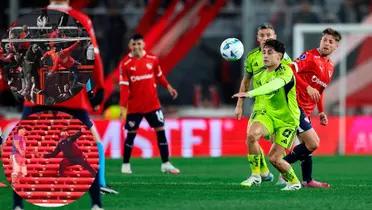What are the Premier League clubs that have changed their names and why?
Explore the fascinating stories behind Premier League club name changes.

Several Premier League clubs have undergone official name changes, each reflecting pivotal moments in their evolution. These transformations often mirror shifts in location, ownership, or branding strategies aimed at modernizing the club's image or aligning it more closely with its heritage. This article delves into the stories behind these name changes, exploring the reasons and implications for each club. Join us as we delve the fascinating journeys of these football institutions.
Arsenal: From Woolwich Arsenal to Arsenal
Originally founded as Dial Square in 1886, the club was soon renamed Royal Arsenal. In 1891, it became Woolwich Arsenal, reflecting its location in South East London. Following financial difficulties and a subsequent move to North London in 1913, the club dropped "Woolwich" from its name in 1919, becoming simply "Arsenal." This change signified a new chapter and a broader identity beyond its original geographic ties.

Hull City: The Attempted Rebranding to Hull Tigers
In 2013, owner Assem Allam proposed renaming Hull City AFC to "Hull Tigers," aiming to create a more marketable brand internationally. He argued that "City" was too common and lacked uniqueness. However, this move faced significant opposition from supporters and was ultimately rejected by the Football Association in 2014, leading the club to retain its original name.
Leeds United: From Leeds City to Leeds United
The original club, Leeds City, was disbanded in 1919 due to financial irregularities. Shortly thereafter, Leeds United was formed, adopting a new identity to signify a fresh start and to represent the entire city. This change was pivotal in establishing a distinct legacy separate from its predecessor.

Sunderland: From Sunderland and District Teachers AFC to Sunderland AFC
Founded in 1879 as Sunderland and District Teachers AFC, the club opened its membership to non-teachers in 1880 and subsequently changed its name to Sunderland AFC. This shift reflected its broader community representation and laid the foundation for its future successes.
Manchester City: From St. Mark's (West Gorton) to Manchester City
Established in 1880 as St. Mark's (West Gorton), the club underwent several name changes, becoming Ardwick AFC in 1887 and finally Manchester City in 1894. The final change was part of an effort to represent the entire city and to overcome financial difficulties, marking the beginning of a new era.

Stoke City: From Stoke Ramblers to Stoke City
Founded in 1863 as Stoke Ramblers, the club merged with Stoke Victoria Athletic Club in 1878, becoming Stoke Football Club. In 1925, they were granted city status and subsequently adopted the name Stoke City to reflect this new standing. This change underscored their pride in representing the city of Stoke-on-Trent.
Watford: From Watford Rovers to Watford FC
The club began as Watford Rovers in 1881, later becoming West Hertfordshire in 1893. Following a merger with Watford St. Mary's in 1898, the club was renamed Watford FC. This unification aimed to consolidate the town's football efforts under one banner, strengthening its identity and support base.
West Ham United: From Thames Ironworks FC to West Ham United
Established in 1895 as Thames Ironworks FC, the club was reformed in 1900 as West Ham United after the dissolution of the original organization. The new name reflected its geographic location and signaled a departure from its works team origins, appealing to a broader supporter base.

Evolution of club names
The evolution of club names in English football often mirrors significant transitions in identity, ownership, or ambition. These changes, while sometimes controversial, have played crucial roles in shaping the histories and identities of the clubs we know today.
What You Should Know About Premier League Clubs' Name Changes
- Arsenal transitioned from Woolwich Arsenal to Arsenal in 1919 after relocating to North London.
- Hull City's proposed rebranding to Hull Tigers in 2013 was rejected after fan opposition.
- Leeds United was established in 1919 following the disbandment of Leeds City.
- Sunderland changed from Sunderland and District Teachers AFC to Sunderland AFC in 1880.
- Manchester City adopted its current name in 1894, having previously been known as St. Mark's (West Gorton) and Ardwick AFC.
- Stoke City became known by its current name in 1925 after being granted city status.
- Watford FC emerged from a merger in 1898, consolidating local football efforts.
- West Ham United was reformed under its current name in 1900, moving away from its origins as Thames Ironworks FC.
More news

THE GANG IS HERE! First Argentine Stars Arrive in Buenos Aires for Final Qualifier Push!
01/09/2025

THE LAST DANCE! Lionel Messi Confirms His Final World Cup Qualifier in Argentina!
29/08/2025

TRANSFER COLLAPSES! Julio Enciso Fails Medical Exams, Returns to Brighton!
27/08/2025

Vini doesn't feel entirely comfortable at Real Madrid anymore and is seeking a future at another club
26/08/2025

THE REAL MADRID SHOWDOWN: Nico Paz's Future Sparks a Bidding War Across Europe!
25/08/2025

SOUTH AMERICAN SHAME: Independiente vs. U. de Chile Match Canceled After Horrific Incidents!
21/08/2025

Rodrygo Benched by Xabi Alonso: The End of an Era at Real Madrid?
20/08/2025

PARIS IN PARIS! The New Superclub, Paris FC, Rises to Threaten PSG-Marseille Rivalry!
20/08/2025

PSG’s €850M Budget is 30x Larger Than the Smallest in Ligue 1!
19/08/2025

THE DEBUTS ARE HERE! Estupiñán & Modrić Step Onto the San Siro Stage!
18/08/2025

CONTROVERSY IGNITES! Barcelona Opens Season with a Contested 2-0 Victory Over Mallorca!
18/08/2025

SCANDAL ESCALATES: Donnarumma's Harsh Letter Responds to Luis Enrique's Super Cup Snub!
15/08/2025

Franco Mastantuono: A New Number 30 for Real Madrid with a Nod to the Past
14/08/2025

HISTORY MADE! PSG Wins First-Ever Super Cup Title in Thrilling Penalty Shootout!
14/08/2025

Mastantuono Arrives at Valdebebas for Real Madrid Presentation
13/08/2025

ON AND OFF THE PITCH: Is Nicki Nicole the New WAG of Barcelona's Lamine Yamal?
13/08/2025

Donnarumma Bids Farewell to Paris Saint-Germain at the Peak of His Career
13/08/2025

THE ULTIMATUM: PSG Puts Donnarumma on the Transfer Market for a Bargain Price!
13/08/2025



